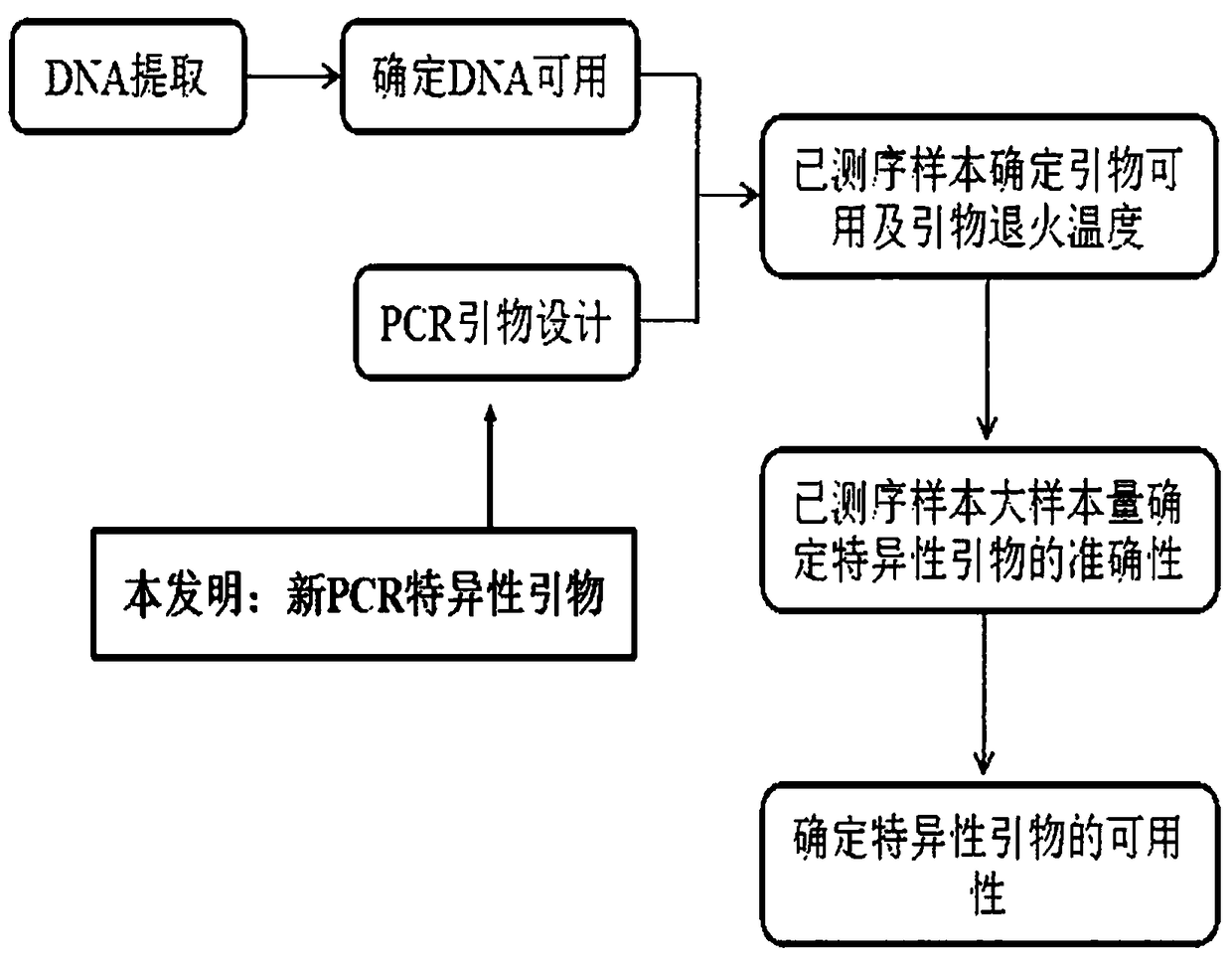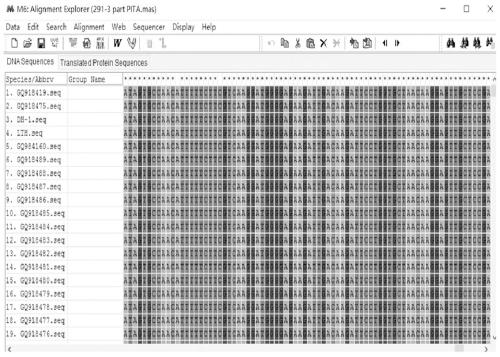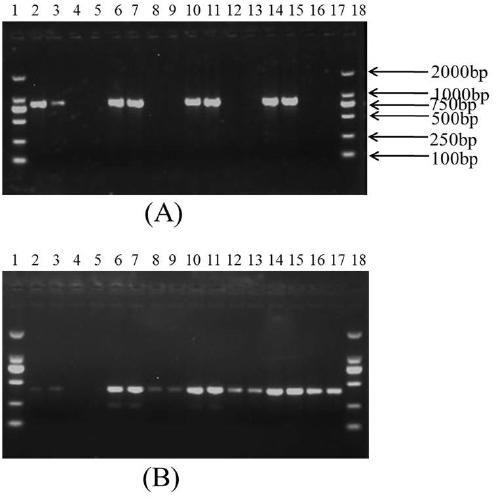A specific primer, molecular marker and detection method for efficiently detecting rice resistance gene pita
A technology of resistance genes and molecular markers, applied in biochemical equipment and methods, microbial determination/inspection, DNA/RNA fragments, etc. The effect of improving the detection efficiency and improving the breeding efficiency
- Summary
- Abstract
- Description
- Claims
- Application Information
AI Technical Summary
Problems solved by technology
Method used
Image
Examples
Embodiment 1
[0040] Example 1 Design and molecular markers of specific primers for efficient detection of rice resistance gene Pita key disease resistance loci
[0041] The primer design process is as follows: figure 1 As shown, the details are as follows:
[0042] (1) Sequence determination and mutation site analysis of the key disease resistance loci of the Pita gene:
[0043] 1. Seedling cultivation: the present invention selects Yunnan Dehong local rice varieties (137 Yunnan Dehong local rice varieties) to carry out seed collection, and seeds are sterilized in May (disinfection method: after 10% sodium hypochlorite solution disinfection for 5 minutes, use sterilized water Wash the seeds more than 10 times); then germinate in 30°C hydroponics in the incubator; transplant to the seedling pots in the greenhouse and use soil (mixture of paddy soil, humus, plant ash) as the substrate for planting for about 20 days (three days) Ye Yixin period);
[0044] 2. Sampling: Collect 142 rice seed...
Embodiment 2
[0067] Example 2 Detection of specific primer annealing temperature and specificity verification of Pita disease-resistant genotype
[0068] Annealing temperature is the most important factor affecting PCR specificity. After denaturation, the temperature is rapidly cooled to 40°C-60°C to allow primers and templates to combine. Since template DNA is much more complex than primers, the chances of collisional binding between primers and templates are much higher than those between complementary strands of templates. The annealing temperature and time depend on the length of the primer, its base composition and its concentration, and the length of the target base sequence.
[0069] By carrying out PCR amplification with the primers of the present invention and the primers of the prior invention at annealing temperatures of 53°C, 55°C, 58°C, 60°C, and 64.5°C respectively, the appropriate annealing temperature is screened, such as image 3 As shown in (A, B), the 1st and 18th lane...
Embodiment 3
[0074] Example 3 A method of using the molecular marker to detect key disease-resistant loci of the rice resistance gene Pita and large sample size verification
[0075] The method for using the molecular marker to detect the key disease resistance site of the rice resistance gene Pita comprises the following steps:
[0076] (1) Genomic DNA extraction of the rice plant of the sample to be tested;
[0077] (2) using the sample DNA obtained in step (1) as a template to construct a PCR reaction system;
[0078] (3) Utilize agarose gel electrophoresis to detect PCR amplification product, when PCR product is positive,
[0079] That is to say, a PCR product with a band length of 814bp was obtained, indicating that the resistance gene Pita 6640 site
[0080] The base is G, and the rice variety is resistant to blast fungus (including AVR-Pita); otherwise, when PCR produces
[0081] When the object is negative, that is, the PCR product with a band length of 814bp cannot be obtained,...
PUM
 Login to View More
Login to View More Abstract
Description
Claims
Application Information
 Login to View More
Login to View More - R&D
- Intellectual Property
- Life Sciences
- Materials
- Tech Scout
- Unparalleled Data Quality
- Higher Quality Content
- 60% Fewer Hallucinations
Browse by: Latest US Patents, China's latest patents, Technical Efficacy Thesaurus, Application Domain, Technology Topic, Popular Technical Reports.
© 2025 PatSnap. All rights reserved.Legal|Privacy policy|Modern Slavery Act Transparency Statement|Sitemap|About US| Contact US: help@patsnap.com



